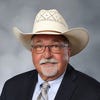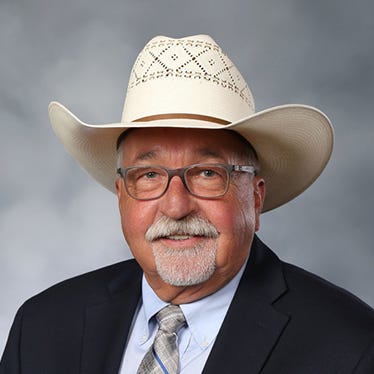June 3, 2022

Early one morning during the second week of February, as I unrolled a bale of hay, I heard the weak little bawl of a newborn calf. There, in the edge of the woods, stood the tiniest red calf I’d ever seen, seemingly crying for its mother.
Counting cows, while inspecting to see which ones had calved overnight, I spotted a first-calf heifer allowing a new, tiny calf to suckle. Hurriedly, I grabbed the bawling little red calf and carried all 25 pounds of him to who I suspected was the mother of bouncing twins. Since instinct told her she was already taking care of her baby and allowing it to suckle, she rudely butted away the interloper. Sadly, this is quite common with bovine twins.
It was cold that morning, with a skiff of snow covering the ground, and I knew the mini bull wouldn’t last long in those conditions. Swiftly, I loaded the little fellow inside the cab of the tractor and transported him to the barn, where I laid him on a fluffy bed of wheat straw. My wife, Judy, had prepared a bottle of warm colostrum, and he quickly gulped down the contents. Immediately after consuming the warm treat, the little calf began shaking like he was at an old-time Quaker revival. My son’s fiancee was witness to the event, and instantaneously dubbed the newborn calf “Shaky.”
We fed the calf three to four times daily, and he would live up to his new name every single time he received nourishment. After a week, the feedings became twice-daily shaking events. After six weeks of living in the barn, and accompanying warmer weather, Judy released the calf to run with all the other cattle, and quickly trained him to come to the yard fence and bawl for his bottle both morning and evening. By this time, he no longer shook, but he still didn’t weigh 50 pounds.
Everybody needs a pet
Any passerby to our farm would look at Shaky and simply assume he was either a miniature animal (he doesn’t look like a dwarf), or he was a week-old calf, instead of nearly 4 months old. He has become a pet, and I’ll wager that Judy will still be feeding him a bottle — if we can scrape up the money for milk replacer — when the end of summer comes. Every farmer needs a pet calf, right?
A couple of weeks ago, the cowboys were scheduled to arrive to gather every animal on the place and run them through the chutes, in order to vaccinate, deworm, brand, ear tag and castrate the bull calves. I arose well before daylight that morning to get everything organized for the day’s activities.
As I slowly walked in the predawn darkness from my house to the barn, I heard an ominous noise from behind me. Too dark to see what was closing in on me at a dead run, I was shocked to feel something very solid hit me about butt high. Falling to the ground and shaking from fear, I looked up (not very high) to see the source of my pain.
Shaky looked down at me as if to say, “Who’s shaking now?”
Crownover raises beef cattle in Missouri.
About the Author(s)
You May Also Like






